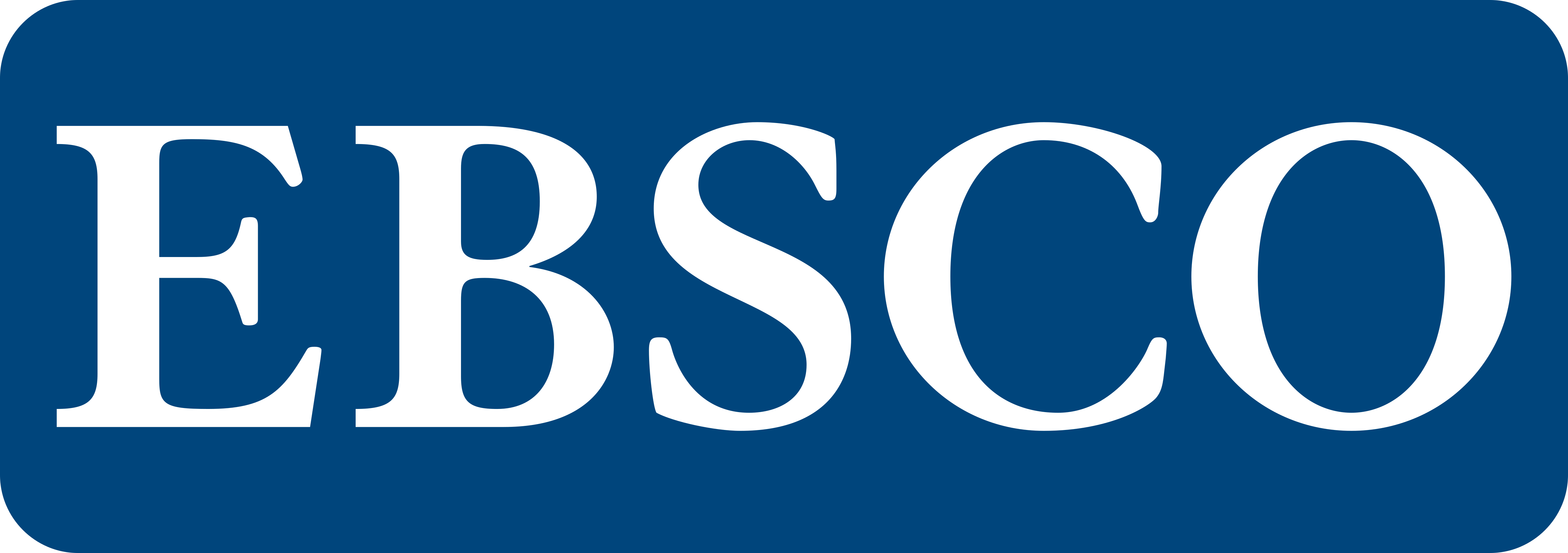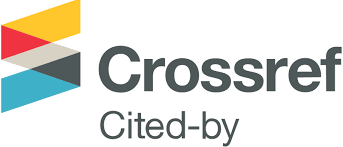Chemical Warfare Agents: Structure, Properties, Decontamination (Part 2)
DOI:
https://doi.org/10.24959/ophcj.24.313307Keywords:
chemical warfare agents, nerve agents, vesicants, decontamination, detection, protectionAbstract
The review is aimed at summarizing and systematizing information about various methods of deactivation of chemical warfare agents that are necessary on the battlefield, as well as in laboratories, research institutions, and facilities of production, storage, and destruction of poisonous substances. The review presents the main directions of neutralizing warfare poisonous substances, which are the most effective in the conditions of their real use. In the second part of this work, the methods of deactivating warfare poisons using nucleophilic reagents, primarily α-nucleophiles, which have high efficiency and can react as nucleophiles and as oxidants, are considered in detail. A promising area of degradation of such products is the use of supernucleophilic systems based on functionalized detergents, as well as adsorption and photocatalytic deactivation methods. The material presented above shows the importance of general knowledge about the physical and chemical properties of chemical warfare agents, the rate of their decomposition, the advantages and disadvantages of certain available technologies for their application. This review can be useful for finding new and improving known methods for decontamination of chemical warfare agents and other ecotoxicants, and protecting the environment.
Supporting Agency
- Grant of the Ukrainian National Academy of Sciences 6.2/2-2023.
Downloads
References
- Popov, A.; Kapitanov, I.; Serdyuk, A.; Shumeiko, A. Reactivity of nucleophiles and α-effect in substitution processes at electron – deficiency centers (Part 1). Ukr. Khim. Zh. 2020, 86 (7). https://doi.org/10.33609/2708-129X.86.7.2020.3-31.
- Popov, A. F. Design of green microorganized systems for decontamination of ecotoxicants. Pure Appl. Chem. 2008, 80 (7), 1381 - 1397. https://doi.org/10.1351/pac200880071381.
 |
| 
- Yang, Y. C.; Szafraniec, L. L.; Beaudry, W. T.; Rohrbaugh, D. K. Oxidative detoxification of phosphonothiolates. J. Am. Chem. Soc. 1990, 112 (18), 6621 - 6627. https://doi.org/10.1021/ja00174a025.
 |
| 
- Popov, A.; Kapitanov, I.; Serdyuk, A.; Shumeiko, A. Reactivity of nucleophiles and α-effect in substitution processes at electron – deficiency centers (Part 2). Ukr. Khem. Zh. 2020, 86 (8). https://doi.org/10.33609/2708-129X.86.8.2020.77-100.
- Bromberg, L.; Hatton, T. A. Nerve Agent Destruction by Recyclable Catalytic Magnetic Nanoparticles. Ind. Eng. Chem. Res. 2005, 44 (21), 7991 - 7998. https://doi.org/10.1021/ie0506926.
 |
| 
- Richardson, D. E.; Yao, H.; Frank, K. M.; Bennett, D. A. Equilibria, Kinetics, and Mechanism in the Bicarbonate Activation of Hydrogen Peroxide: Oxidation of Sulfides by Peroxymonocarbonate. J. Am. Chem. Soc. 2000, 122 (8), 1729 - 1739. https://doi.org/10.1021/ja9927467.
 |
| 
- Bakhmutova-Albert, E. V.; Yao, H.; Denevan, D. E.; Richardson, D. E. Kinetics and Mechanism of Peroxymonocarbonate Formation. Inorg. Chem. 2010, 49 (24), 11287 - 11296. https://doi.org/10.1021/ic1007389.
 |
|  |
| 
- Wagner, G. W. Studies on Residue-Free Decontaminants for Chemical Warfare Agents. Environ. Sci. Technol. 2015, 49 (6), 3755 - 3760. https://doi.org/10.1021/es506045a.
 |
|  |
| 
- Wagner, G. W.; Procell, L. R.; Yang, Y.-C.; Bunton, C. A. Molybdate/Peroxide Oxidation of Mustard in Microemulsions. Langmuir 2001, 17 (16), 4809 - 4811. https://doi.org/10.1021/la010334h.
 |
| 
- Chiarini, M.; Bunton, C. A. Oxidation of Thioanisole by Peroxomolybdate in Alcohol-Modified Micelles of Cetylpyridinium Chloride. Langmuir 2002, 18 (23), 8806 - 8812. https://doi.org/10.1021/la026156p.
 |
| 
- Taube, F.; Hashimoto, M.; Andersson, I.; Pettersson, L. Characterisation of aqueous peroxomolybdate catalysts applicable to pulp bleaching. J. Chem. Soc., Dalton Trans. 2002, (6), 1002 - 1008, 10.1039/B107936K. https://doi.org/10.1039/B107936K.

- Zhao, S.; Xi, H.; Zuo, Y.; Wang, Q.; Wang, Z.; Yan, Z. Bicarbonate-activated hydrogen peroxide and efficient decontamination of toxic sulfur mustard and nerve gas simulants. J. Hazard. Mater. 2018, 344, 136 - 145. https://doi.org/10.1016/j.jhazmat.2017.09.055.
 |
|  |
| 
- Nardello, V.; Marko, J.; Vermeersch, G.; Aubry, J. M. 90Mo NMR and kinetic studies of peroxomolybdic intermediates involved in the catalytic disproportionation of hydrogen peroxide by molybdate ions. Inorg. Chem. 1995, 34 (20), 4950 - 4957. https://doi.org/10.1021/ic00124a007.
 |
| 
- Singh, B.; Prasad, G.; Pandey, K.; Danikhel, R.; Vijayaraghavan, R. Decontamination of Chemical Warfare Agents (Review Article). Def. Sci. J 2010, 60, 428 - 441. https://doi.org/10.14429/dsj.60.487.
- Zhao, S.; Xi, H.; Zuo, Y.; Han, S.; Zhu, Y.; Li, Z.; Yuan, L.; Wang, Z.; Liu, C. Rapid activation of basic hydrogen peroxide by borate and efficient destruction of toxic industrial chemicals (TICs) and chemical warfare agents (CWAs). J. Hazard. Mater. 2019, 367, 91 - 98. https://doi.org/10.1016/j.jhazmat.2018.12.075.
 |
|  |
| 
- Davies, D. M.; Deary, M. E.; Quill, K.; Smith, R. A. Borate-catalyzed reactions of hydrogen peroxide: kinetics and mechanism of the oxidation of organic sulfides by peroxoborates. Chem. Eur. J. 2005, 11 12, 3552 - 3558. https://doi.org/10.1002/chem.200401209.
 |
|  |
| 
- Deary, M. E.; Durrant, M. C.; Davies, D. M. A kinetic and theoretical study of the borate catalysed reactions of hydrogen peroxide: the role of dioxaborirane as the catalytic intermediate for a wide range of substrates. Org. Biomol. Chem. 2013, 11 (2), 309 - 317. https://doi.org/10.1039/C2OB26842F.
 |
|  |
| 
- Lobachev, V. L.; Zimtseva, G. P.; Matvienko, Y. V.; Rudakov, E. S. Kinetics of the oxidation of diethyl sulfide in the B(OH)3-H2O2/H2O system. Theor. Exp. Chem. 2007, 43 (1), 44 - 49. https://doi.org/10.1007/s11237-007-0004-4.

- Menger, F. M.; Rourk, M. J. Deactivation of mustard and nerve agent models via low-temperature microemulsions. Langmuir 1999, 15, 309 - 313. https://doi.org/10.1021/la980910i.
 |
| 
- Picard, B.; Chataigner, I.; Maddaluno, J.; Legros, J. Introduction to chemical warfare agents, relevant simulants and modern neutralisation methods. Org. Biomol. Chem. 2019, 17 (27), 6528 - 6537. https://doi.org/10.1039/C9OB00802K.
 |
|  |
| 
- Wagner, G. W.; Sorrick, D. C.; Procell, L. R.; Brickhouse, M. D.; McVey, I. F.; Schwartz, L. I. Decontamination of VX, GD, and HD on a Surface Using Modified Vaporized Hydrogen Peroxide. Langmuir 2007, 23 (3), 1178 - 1186. https://doi.org/10.1021/la062708i.
 |
|  |
| 
- Mikutta, R.; Kleber, M.; Kaiser, K.; Jahn, R. Organic matter removal from soils using hydrogen peroxide, sodium hypochlorite, and disodium peroxodisulfate. Soil Sci. Soc. Am. J. 2005, 69, 120 - 135. https://doi.org/10.2136/sssaj2005.0120.
 |
| 
- Wagner, G. W.; Yang, Y.-C. Rapid Nucleophilic/Oxidative Decontamination of Chemical Warfare Agents. Ind. Eng. Chem. Res. 2002, 41 (8), 1925 - 1928. https://doi.org/10.1021/ie010732f.
 |
| 
- Yang, Y. C.; Baker, J. A.; Ward, J. R. Decontamination of chemical warfare agents. Chem. Rev. 1992, 92 (8), 1729 - 1743. https://doi.org/10.1021/cr00016a003.
 |
| 
- Wagner, G.; Yang Y.-C. (US Department of Army). Universal Decontaminating Solution for Chemical Warfare Agents. US Patent US6245957B1, June 12, 2001.
- Wagner, G.; Procell, L.; Yang Y.-C.; Bunton C. (US Department of Army). Molybdate/peroxide microemulsions useful for decontamination of chemical warfare agents. US Patent US6723891B1, April 20, 2004.
- Raber, E.; McGuire, R. Oxidative decontamination of chemical and biological warfare agents using L-Gel. J. Hazard. Mater. 2002, 93 (3), 339 - 352. https://doi.org/10.1016/S0304-3894(02)00051-1.
 |
|  |
| 
- Carniato, F.; Bisio, C.; Psaro, R.; Marchese, L.; Guidotti, M. Niobium(V) Saponite Clay for the Catalytic Oxidative Abatement of Chemical Warfare Agents. Angew. Chem., Int. Ed. 2014, 53 (38), 10095 - 10098. https://doi.org/10.1002/anie.201405134.
 |
|  |
| 
- Shen, Z.; Zhong, J.-Y.; Yang, J.-C.; Cui, Y.; Zheng, H.; Wang, L.-Y.; Wang, J.-L. Decontamination of Chemical Warfare Agents by Zn2+ and Ge4+ co-doped TiO2 nanocrystals at sub-zero temperatures: A solid-state NMR and GC study. Chem. Phys. Lett. 2018, 707, 31 - 39. https://doi.org/10.1016/j.cplett.2018.07.033.
 |
| 
- Qi, L.; Zuo, G.; Cheng, Z.; Wang, L.; Zhou, C. Treatment of chemical warfare agents by combined sodium percarbonate with tetraacetylethylenediamine solution. Chem. Eng. J. 2013, 229, 197 - 205. https://doi.org/10.1016/j.cej.2013.05.108.
 |
| 
- Hogan, T.; Simpson, R.; Lin, M.; Sen, A. The deep oxidation of chemical warfare agent models: facile catalytic oxidative cleavage of phosphorus-carbon and sulfur-carbon bonds using dioxygen. Catal. Lett. 1997, 49 (1), 59 - 63. https://doi.org/10.1023/A:1019088818029.
 |
| 
- Bromberg, L.; Schreuder-Gibson, H.; Creasy, W. R.; McGarvey, D. J.; Fry, R. A.; Hatton, T. A. Degradation of Chemical Warfare Agents by Reactive Polymers. Ind. Eng. Chem. Res. 2009, 48 (3), 1650 - 1659. https://doi.org/10.1021/ie801150y.
 |
| 
- Popov, A. F.; Savelova, V. A. Modern approaches to the construction of highly efficient nucleophilic systems. Theor. Exp. Chem. 1999, 35 (1), 1 - 17. https://doi.org/10.1007/BF02511123.

- Gonzaga, F.; Segues, B.; Perez, É.; Rico-Lattesh, I.; Lattes, A. Decontamination chimique. II. Oxydation de composés soufrés en milieu micellaire: rôle de la lipophilie des substrats. C. R. Acad. Sci., Ser. IIc: Chim. 1998, 1 (3), 209 - 216. https://doi.org/10.1016/S1387-1609(99)80082-6.
 |
| 
- Delfino, R. T.; Ribeiro, T. S.; Figueroa-Villar, J. D. Organophosphorus compounds as chemical warfare agents: a review. J. Braz. Chem. Soc. 2009, 20, 407 - 428. https://doi.org/10.1590/S0103-50532009000300003.
 |
| 
- Ariga K.; Kunitake, T. Supramolecular Chemistry - Fundamentals and Applications; Springer: Heidelberg, 2006.
- Wasserscheid, P.; Welton, T. Ionic Liquids in Synthesis; Wiley, 2008.
- Holmberg, K. Handbook of Applied Surface and Colloid Chemistry; Wiley: Chichester, England; New York, 2002.
- Lion, C.; Despagne, B.; Delmas, G.; Fosset, L. Destruction Du Paraoxon Par Une Nouvelle Série de Sels de N‐Alkyl Hydroximinomethylpyridinium. Bull. Soc. Chim. Belg. 1991, 100 (7), 549 - 554. https://doi.org/10.1002/bscb.19911000710.
 |
| 
- Menger, F. M.; Elrington, A. R. Rapid Deactivation of Mustard via Microemulsion Technology. J. Am. Chem. Soc. 1990, 112 (22), 8201 - 8203. https://doi.org/10.1021/ja00178a074.
 |
| 
- Toullec, J.; Moukawim, M. Cetyltrimethylammonium Hydroperoxide: An Efficient Reagent for Promoting Phosphate Ester Hydrolysis. Chem. Commun. 1996, No. 2, 221. https://doi.org/10.1039/cc9960000221.
 |
| 
- Gonzaga, F.; Perez, E.; Rico–Lattes, I.; Lattes, A. New Microemulsions for Oxidative Decontamination of Mustard Gas Analogues and Polymer-Thickened Half-Mustard. New J. Chem. 2001, 25 (1), 151 - 155. https://doi.org/10.1039/b003671o.
 |
| 
- Zimmerman, J. B.; Anastas, P. T.; Erythropel, H. C.; Leitner, W. Designing for a Green Chemistry Future. Science 2020, 367 (6476), 397 - 400. https://doi.org/10.1126/science.aay3060.
 |
|  |
| 
- Marrs, T. C.; Maynard, R. L.; Sidell, F. R. Chemical Warfare Agents: Toxicology and Treatment; Wiley: Chichester, West Sussex, England; Hoboken, Nj, 2007.
- Han, X.; Balakrishnan, V. K.; vanLoon, G. W.; Buncel, E. Degradation of the Pesticide Fenitrothion as Mediated by Cationic Surfactants and α-Nucleophilic Reagents. Langmuir 2006, 22 (21), 9009 - 9017. https://doi.org/10.1021/la060641t.
 |
|  |
| 
- Han, X.; Balakrishnan, V. K.; Buncel, E. Alkaline Degradation of the Organophosphorus Pesticide Fenitrothion as Mediated by Cationic C12, C14, C16, and C18 Surfactants. Langmuir 2007, 23 (12), 6519 - 6525. https://doi.org/10.1021/la063521u.
 |
|  |
| 
- Balakrishnan, V. K.; Han, X.; vanLoon, G. W.; Dust, J. M.; Toullec, J.; Buncel, E. Acceleration of Nucleophilic Attack on an Organophosphorothioate Neurotoxin, Fenitrothion, by Reactive Counterion Cationic Micelles. Regioselectivity as a Probe of Substrate Orientation within the Micelle. Langmuir 2004, 20 (16), 6586 - 6593. https://doi.org/10.1021/la049572d.
 |
|  |
| 
- Omakor, J. E.; Ikenna Onyido; vanLoon, G. W.; Buncel, E. Mechanisms of Abiotic Degradation and Soil–Water Interactions of Pesticides and Other Hydrophobic Organic Compounds. Part 3. Nucleophilic Displacement at the Phosphorus Centre of the Pesticide Fenitrothion [O,O-Dimethyl O-(3-Methyl-4-Nitrophenyl) Phosphorothioate] by Oxygen Nucleophiles in Aqueous Solution: α-Effect and Mechanism†. J. Chem. Soc., Perkin Trans. 2 2001, No. 3, 324 - 330. https://doi.org/10.1039/b008615k.
 |
| 
- Martinek, K.; A.K. Yatsimirski; Osipov, A. P.; Berezin, I. V. Micellar Effects on Kinetics and Equilibrium of Synthesis and Hydrolysis of Benzylideneaniline. Tetrahedron 1973, 29 (7), 963 - 969. https://doi.org/10.1016/0040-4020(73)80046-8.
 |
| 
- A Comparative Analysis of Pseudophase Ion-Exchange (PIE) Model and Berezin Pseudophase (BPP) Model: Analysis of Kinetic Data for Ionic Micellar-Mediated Semi-Ionic Bimolecular Reaction. Bull. Korean Chem. Soc. 2007, 28 (7), 1135 - 1140. https://doi.org/10.5012/bkcs.2007.28.7.1135.
 |
| 
- Kapitanov, I. V.; Mirgorodskaya, A. B.; Valeeva, F. G.; Gathergood, N.; Kuca, K.; L. Ya. Zakharova; Yevgen Karpichev. Physicochemical Properties and Esterolytic Reactivity of Oxime Functionalized Surfactants in PH-Responsive Mixed Micellar System. Colloids Surf., A 2017, 524, 143 - 159. https://doi.org/10.1016/j.colsurfa.2017.04.039.
 |
| 
- Quina, F. H.; Chaimovich, Hernan. Ion Exchange in Micellar Solutions. 1. Conceptual Framework for Ion Exchange in Micellar Solutions. J. Phys. Chem. 1979, 83 (14), 1844 - 1850. https://doi.org/10.1021/j100477a010.
 |
| 
- Menger, F. M.; Portnoy, C. E. Chemistry of Reactions Proceeding inside Molecular Aggregates. J. Am. Chem. Soc. 1967, 89 (18), 4698 - 4703. https://doi.org/10.1021/ja00994a023.

- Al-Lohedan, H.; Bunton, C. A. Ion Binding and Micellar Effects upon Reactions of Carboxylic Anhydrides and Carbonate Esters. J. Org. Chem. 1982, 47 (7), 1160 - 1166. https://doi.org/10.1021/jo00346a003.
 |
| 
- Bunton, C. A.; Lawrence Baylor Robinson. Micellar Effects upon the Reaction of P-Nitrophenyl Diphenyl Phosphate with Hydroxide and Fluoride Ions. J. Org. Chem. 1969, 34 (4), 773 - 780. https://doi.org/10.1021/jo01256a002.

- Bunton, C. A.; Ihara, Y. Micellar Effects upon Dephosphorylation and Deacylation by Oximate Ions. J. Org. Chem. 1977, 42 (17), 2865 - 2869. https://doi.org/10.1021/jo00437a018.
 |
| 
- Kapitanov, I.; Serdyuk, A.; Shumeiko, A.; Prokop’eva, T.; Popov, A. Acid-base properties of functionalized surfactants in micellar systems. Ukr. Khim. Zh. 2017, 83 (8), 94 - 102 [in Russian].
- Singh, N.; Karpichev, Y.; Tiwari, A. K.; Kuca, K.; Ghosh, K. K. Oxime Functionality in Surfactant Self-Assembly: An Overview on Combating Toxicity of Organophosphates. J. Mol. Liq. 2015, 208, 237 - 252. https://doi.org/10.1016/j.molliq.2015.04.010.
 |
| 
- Le, D. V.; Nguyen, M. B.; Dang, P. T.; Lee, T.; Nguyen, T. D. Synthesis of a UiO-66/G-C3N4 Composite Using Terephthalic Acid Obtained from Waste Plastic for the Photocatalytic Degradation of the Chemical Warfare Agent Simulant, Methyl Paraoxon. RSC Advances 2022, 12 (35), 22367 - 22376. https://doi.org/10.1039/D2RA03483B.
 |
|  |
| 
- Giannakoudakis, D. A.; Pearsall, F.; Florent, M.; Lombardi, J.; O’Brien, S.; Bandosz, T. J. Barium Titanate Perovskite Nanoparticles as a Photoreactive Medium for Chemical Warfare Agent Detoxification. J. Colloid Interface Sci. 2018, 531, 233 - 244. https://doi.org/10.1016/j.jcis.2018.07.053.
 |
|  |
| 
- Liu, Y.; Moon, S.-Y.; Hupp, J. T.; Farha, O. K. Dual-Function Metal–Organic Framework as a Versatile Catalyst for Detoxifying Chemical Warfare Agent Simulants. ACS Nano 2015, 9 (12), 12358 - 12364. https://doi.org/10.1021/acsnano.5b05660.
 |
|  |
| 
- Zuo, G.-M.; Cheng, Z.-X.; Li, G.-W.; Shi, W.-P.; Miao, T. Study on Photolytic and Photocatalytic Decontamination of Air Polluted by Chemical Warfare Agents (CWAs). Chem. Eng. J. 2007, 128 (2-3), 135 - 140. https://doi.org/10.1016/j.cej.2006.10.006.
 |
| 
- Vorontsov, A. V.; Davydov, L.; Reddy, E. P.; Lion, C.; Savinov, E. N.; Smirniotis, P. G. Routes of Photocatalytic Destruction of Chemical Warfare Agent Simulants. New J. Chem. 2002, 26 (6), 732 - 744. https://doi.org/10.1039/b109837c.
 |
| 
- Horikoshi, S.; Watanabe, N.; Mukae, M.; Hidaka, H.; Serpone, N. Mechanistic Examination of the Titania Photocatalyzed Oxidation of Ethanolamines. New J. Chem. 2001, 25 (8), 999 - 1005. https://doi.org/10.1039/b102186i.
 |
| 
- Wilson, C.; Main, M.; N. John Cooper; Briggs, M. E.; Cooper, A. I.; Adams, D. J. Swellable Functional Hypercrosslinked Polymer Networks for the Uptake of Chemical Warfare Agents. Polym. Chem. 2017, 8 (12), 1914 - 1922. https://doi.org/10.1039/c7py00040e.
 |
| 
- DeCoste, J. B.; Peterson, G. W. Metal–Organic Frameworks for Air Purification of Toxic Chemicals. Chem. Rev. 2014, 114 (11), 5695 - 5727. https://doi.org/10.1021/cr4006473.
 |
|  |
| 
- Prasad, G. K.; Gautam, A.; Kannan, G. M.; Acharya, J.; Gupta, A. K.; Thakare, V. B.; Singh, B. Nanomaterials Based Decontamination Formulation for Use in Personal Decontamination Kit against Chemical Warfare Agents. Defense Life Science Journal 2017, 3 (1), 5. https://doi.org/10.14429/dlsj.3.12056.
- Szinicz, L. History of Chemical and Biological Warfare Agents. Toxicology 2005, 214 (3), 167 - 181. https://doi.org/10.1016/j.tox.2005.06.011.
 |
|  |
| 
Downloads
Published
How to Cite
Issue
Section
License
Copyright (c) 2024 National University of Pharmacy

This work is licensed under a Creative Commons Attribution 4.0 International License.
Authors publishing their works in the Journal of Organic and Pharmaceutical Chemistry agree with the following terms:
1. Authors retain copyright and grant the journal the right of the first publication of the work under Creative Commons Attribution License allowing everyone to distribute and re-use the published material if proper citation of the original publication is given.
2. Authors are able to enter into separate, additional contractual arrangements for the non-exclusive distribution of the journal’s published version of the work (e.g., post it to an institutional repository or publish it in a book) providing proper citation of the original publication.
3. Authors are permitted and encouraged to post their work online (e.g. in institutional repositories or on authors’ personal websites) prior to and during the submission process, as it can lead to productive exchanges, as well as earlier and greater citation of published work (see The Effect of Open Access).















